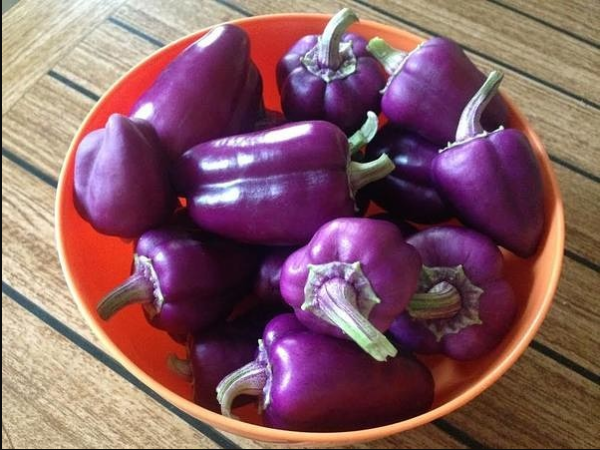
Big Papa is a non-standard sweet pepper with a purple or cherry fruit color. It grows well in the middle lane, is not afraid of disease.
The culture is grown in commercial farms and private gardens.
Content
General characteristics
"Big Dad" - an early ripe pepper. It bears fruit in just 100 days - this is one of the minimum vegetative periods among varieties of sweet peppers.
The plant grows low. The bushes reach no more than 50 cm and do not require garter or installation of supports. This is a definite plus - the site looks less congested, pepper does not block the sun for low grasses and plants growing nearby. In general, the variety is unpretentious. Thanks to this quality, it is used in children's greenery circles: even children can give the plant enough care for flowering and harvest.
The culture is suitable for growing under a film or in open conditions, however, openly growing a plant is possible only in the southern regions of the country.
Like other peppers, the plant is grown in two stages: first, seedlings are planted, then it is placed in the main soil, prepared in advance or covered with a low tent. Productivity is very high. Learn more about the fruits below.
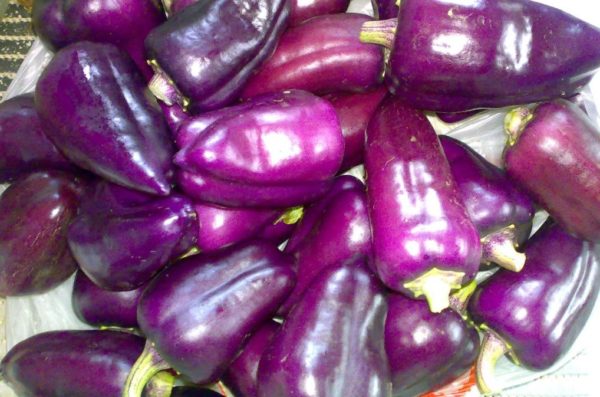
Growing in Russia
“Big Dad” is suitable for the middle zone (East of Russia - East European Plain), as well as the Volga region, where the temperature conditions are more favorable. In the North, including in areas with cool summers (with temperatures of 15-20 degrees), it is necessary to use faded or other film to maintain heat. Better to put the crop in the greenhouse. In the Volga region, especially in areas with black soil, pepper grows best. It does not require additional shelters.
In Kaliningrad, Sevastopol, and other areas with hot summers, it is necessary to provide protection against burns of foliage. So that those leaves do not fade due to the constant exposure to ultraviolet light, it is recommended to establish shading or plant a crop where the sun does not shine directly all day. Do not moisten the plant during the heat with a large stream of water: this can not only lead to the breakage of the stem, but also increase the burn. Large drops work like a prism and enhance the effect of the sun.
Since clay soils of the middle strip are not nutritious enough for sweet pepper, when planting in open ground, it is necessary to fertilize. If the clay soil spreads too much during the wet period, a third of the sand is added; and sandy soil is recommended to add black soil or brown soil - the result of humus foliage.
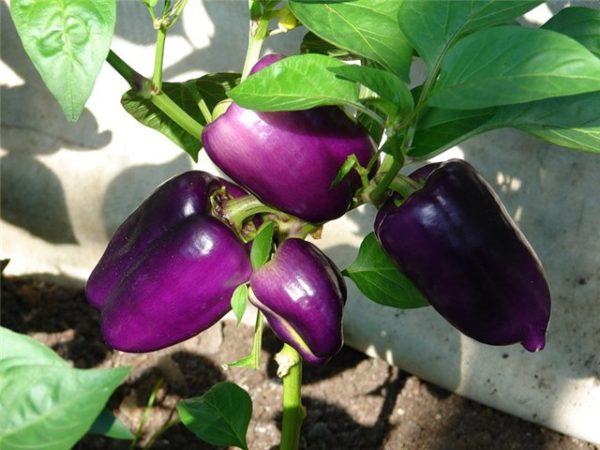
"Big Dad" is a common farming culture, which indicates its high productivity in Russian conditions. However, for good productivity, you must follow all the rules of agricultural technology.
Care Features
The plant is unpretentious.To maintain a normal state, it is enough to carry out basic procedures - fertilizing, watering, moisturizing, maintaining the temperature regime. Pepper is disease resistant, but does not tolerate stress. Therefore, with a sharp drop in temperature, transplantation or other stressful events for the plant, you need to spray the stems and leaves with Eprin.
You can spud the bush so that it is protected from pests (slugs, mice, snails). It is recommended to remove weeds and grass from the soil near the crop. This will help increase the flow of food to the vegetable.
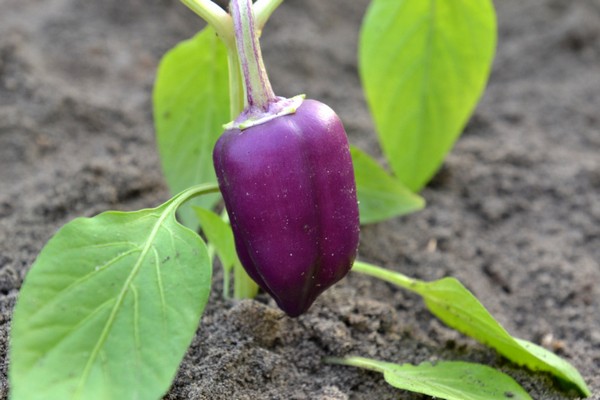
Departure Dates
The plant has no clear timelines for planting. But it is optimal to sow it together with other early ripe fruits - at the end of January or during February. If meteorologists predict bad weather in early summer, sowing can be delayed until the end of February.
First, seeds need to be grown at home. The optimum temperature is from 26 to 28 degrees. The seed needs to be immersed to a depth of 3-4 cm. If the seed firm is proven, it is enough to plant one seed — the risk of “dead” seed is minimal. But if in doubt, it is better to put two grains in one pot.
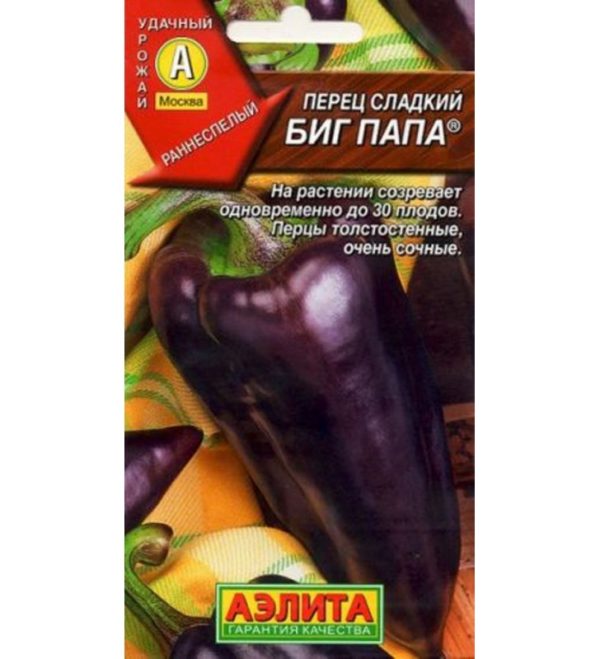
Ripening dates and characteristics of the fruit
Fact: The vegetative cycle depends on the time of sowing. If you plant seeds at a later time, already in the spring, then the bush will not yield the crop as early as the manufacturer stated. The bush begins to bear fruit abundantly after a short beautiful flowering. More than a dozen fruits appear on one bush. Be sure to trim the lower leaves so that they do not "pull" nutrients.
Pepper is considered biologically mature when it takes on a dark cherry hue. You can remove the fruits and send them for technical ripening or storage when the pepper turns purple.
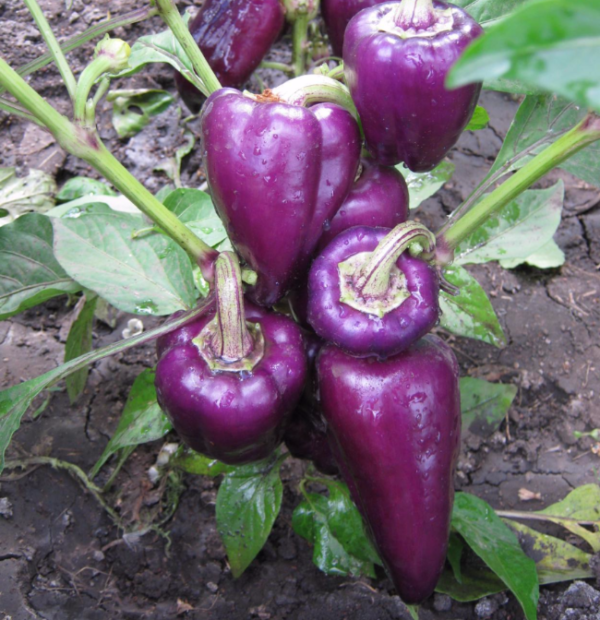
Disease resistance
The plant is not susceptible to disease, and in the event of a disease (which is rare) it quickly recovers.
With proper care and use of top dressing, seedlings should not be covered with black dots, yellow and brown spots from sunburn. If stems or roots began to rot, it is necessary to reduce the level of humidity in the room or soil. Interesting: “Big Dad” can not be treated with protective compounds, because he has good immunity. This allows you to increase the amount of vitamins in the fetus and make dishes safer for allergy sufferers and children.
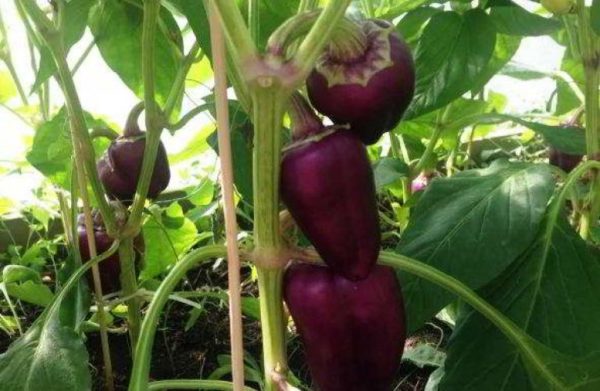
Plant application
The fruits of the "Big Daddy" have high palatability. They are not sugary, but not bitter either. There is no acidity, so this variety can be used for any dishes, including fresh salads.
From peppers you can make lecho, the basis for a stuffed dish, salad, grilled dish, bake on a fire. Shredded or thinly sliced rings complement well the fresh summer sandwiches.You can use the rings to decorate the plate.
During flowering, beautiful small blue flowers appear on the stems. Therefore, sprouts can be planted in a conspicuous place - during flowering, they attract attention with inflorescences, and during ripening - unusual fruits with a purple hue of the walls. The leaves on the bushes are large, with a bluish tint. If the plant has received enough nutrition, the blue at the tips will be especially noticeable.
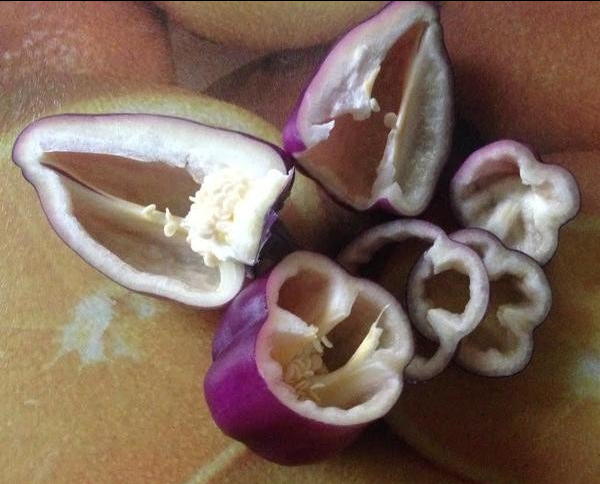
Advantages and disadvantages of the variety
Positive aspects of the variety:
- does not die during cold snap;
- has a high yield;
- well adapted to Russian conditions;
- early ripening;
- unpretentious;
- low, does not require garter. Negative characteristics:
- susceptible to stress and in rare cases may die;
- during transplantation, it may stop growing for some time, which, however, does not affect yield;
- fruits relative to other varieties are small.
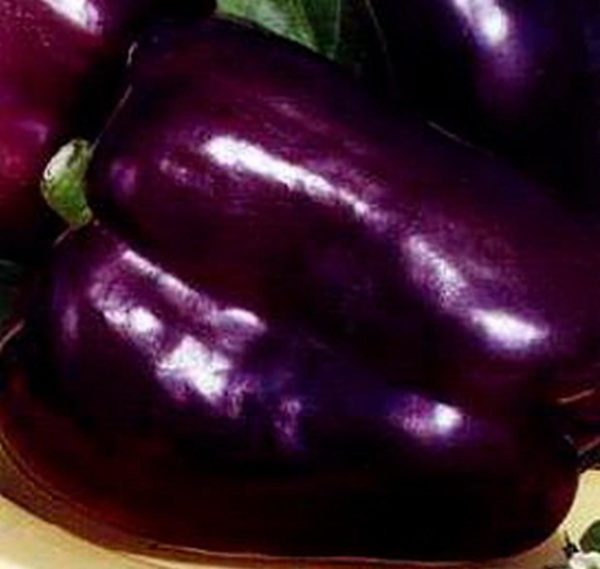
Reviews gardeners
Kirill Petrovich, 72 years old. Kropotkin:
“I have been growing peppers for sale since I found the Big Dad variety on the market. Peppers did not go to it - they died or gave a bad harvest, because the region is northern and in summer it is only +18 on the street. But Big Dad steadily brings 20 kg of pepper from a small bed 4 meters long. They buy it well, they advise the variety to friends. Every year I sell the entire crop in a couple of days. ”
Inga Ivanovna, 52 years old. from. Levokumskoye, Neftekumsky district, Stavropol Territory:
“I don’t understand gardening, so many cultures died before. With Big Dad, everything went well. Grew him for the summer lecho. Despite the fact that sometimes I forgot to fertilize and even water, the bushes gave a crop. And the lecho turned out excellent. Only for salad, I would recommend red varieties, not this one. ”
Ivan Alexandrovich, 41 years old. Novoshakhtinsk, Rostov region:
“Every year I grow something to have my own vegetables for the winter. "Big dad" was very convenient: dropped off at the end of spring, fed, left. He came to the country, on weekends and watered, sheltered - nothing, the plant did not suffer from a lack of moisture or cold. In the summer, it began to bear fruit. It’s a little bit bitter, but maybe it’s the lack of fertilizers.
Bushes are sold in several versions. They can be found at the most popular horticultural firms. Unpretentiousness, low cost of seeds, good productivity make the variety especially attractive. "Big dad" should opt for people with a small amount of time to care for the garden and those who want to get a crop with a minimum of costs. "




 Calorie pepper stuffed with meat and rice - BZHU per 100 grams
Calorie pepper stuffed with meat and rice - BZHU per 100 grams Gorky pepper - the best varieties for open ground
Gorky pepper - the best varieties for open ground Hot pepper seeds - the best varieties for open ground and reviews
Hot pepper seeds - the best varieties for open ground and reviews Capsicum tincture for hair - how to use and reviews
Capsicum tincture for hair - how to use and reviews